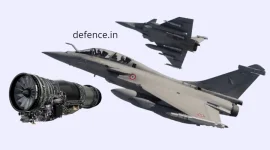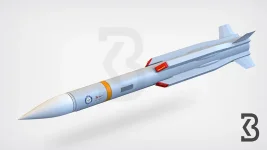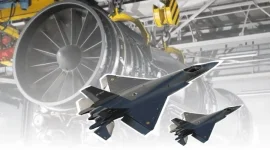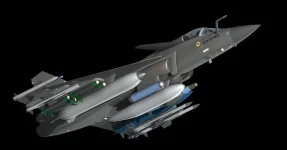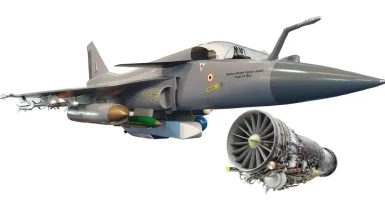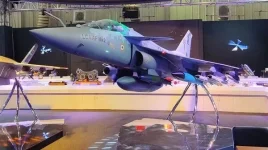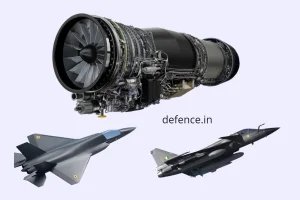The Indian Air Force (IAF) is advancing its modernization and self-reliance goals with the development of the Tejas Mk2, a 4.5-generation medium-weight fighter.
This indigenous aircraft is engineered to succeed the respected Mirage-2000 fleet and diminish India's long-standing dependence on Russian military hardware.
Drawing design inspiration from the French Rafale, the Tejas Mk2 aims to provide a powerful, domestically produced, and cost-effective alternative to address the nation's air defence needs.
Developed by the Aeronautical Development Agency (ADA) of the Defence Research and Development Organisation (DRDO) and manufactured by Hindustan Aeronautics Limited (HAL), the Tejas Mk2 represents a significant leap in India's aerospace capabilities.
As the largest and most sophisticated medium-class fighter jet to be built in the country, it is a cornerstone of the Atmanirbhar Bharat initiative.
The project seeks to provide the IAF with a versatile platform capable of countering regional threats while fostering a robust domestic defence industry.
A Successor to a Legendary Fleet
The Tejas Mk2, officially designated the Medium Weight Fighter (MWF), is a direct response to the limitations of the earlier Tejas Mk1A and the operational need to replace the IAF's approximately 50 Mirage-2000 jets.These French-made aircraft, in service since the 1980s, have proven their mettle in critical conflicts, including the 1999 Kargil War and the 2019 Balakot airstrike, but are now approaching the end of their service life.
With a maximum takeoff weight of 17.5 tonnes, the Mk2 is substantially larger and more capable than its 13.5-tonne predecessor, the Tejas Mk1A.
Sanctioned in 2009, the development of the Tejas Mk2 is crucial for addressing the IAF's current shortfall of 31 squadrons against a sanctioned strength of 42.
While the first flight is anticipated by early 2026, with production slated to begin around 2029, the aircraft is expected to form the future backbone of the IAF's medium-weight fighter fleet.
Emulating Rafale's Multirole Excellence
The design and capabilities of the Tejas Mk2 are heavily influenced by the Dassault Rafale, a multirole fighter that has demonstrated exceptional performance in IAF service, including during "Operation Sindoor" in May 2025.The Mk2 aims to replicate the Rafale's success in a more affordable, indigenous package.
- Aerodynamics and Stealth: The Tejas Mk2 adopts a canard-delta wing design similar to the Rafale, which enhances manoeuvrability and agility. It makes extensive use of composite materials and radar-absorbent materials to reduce its radar cross-section (RCS), making it harder for enemy radar to detect. It will also feature an advanced, indigenous electronic warfare suite for enhanced survivability.
- Engine and Performance: A key upgrade is the single, more powerful General Electric F-414 engine, which will be produced in India under a landmark technology transfer agreement. This engine allows the Mk2 to achieve a top speed of Mach 1.8 and a combat radius of 1,500 km, a significant improvement over the Tejas Mk1A. The deal for 80% technology transfer is expected to be finalized by March 2026, enabling domestic production by 2029.
- Avionics and Sensors: The aircraft will be equipped with the advanced indigenous Uttam Active Electronically Scanned Array (AESA) radar, featuring nearly 1,000 transmit/receive modules for a detection range of up to 200 km. This system, coupled with an Infrared Search and Track (IRST) sensor and a modern glass cockpit, provides the pilot with superior situational awareness comparable to that of the Rafale.
- Weapons and Payload: The Tejas Mk2 can carry a 6.5-tonne payload across 11 hardpoints, a major increase from the Mk1A. Its arsenal will include a suite of indigenous weapons such as the Astra series of beyond-visual-range missiles and the BrahMos-NG cruise missile. This allows it to perform a variety of roles, including air-to-air combat, ground attack, and maritime strike missions.
Shifting Away from Russian Dependence
A primary strategic objective of the Tejas Mk2 program is to decrease India's dependence on Russian-origin aircraft, which currently form the bulk of the IAF's combat fleet.Platforms like the Su-30MKI and MiG-29 have been plagued by high operational costs, challenges in sourcing spare parts—exacerbated by geopolitical events like the Russia-Ukraine conflict—and limitations on technology transfer.
The Su-30MKI, while a potent aircraft, has significantly higher maintenance costs compared to indigenous platforms. The Tejas Mk2, with its modern domestic systems and the reliable GE F-414 engine, is expected to offer lower life-cycle costs and greater operational availability.
By 2035, the IAF plans to phase out its remaining MiG-21s and reduce its reliance on the MiG-29 fleet.
The Tejas Mk1A and the new Mk2 will form the core of the medium-weight fighter fleet, operating alongside the 36 Rafale jets to provide a formidable air defence posture.
With an initial indigenous content of over 70%, rising to 90% once engine production is localized, the Tejas Mk2 is set to become a cornerstone of both India's military strength and its defence industrial ambitions.

